Though it’s called Invisible Republic, the Image series from Gabriel Hardman and Corinna Bechko has quickly made its presence felt. In five issues the husband and wife duo (along colorist Jordan Boyd and designer Dylan Todd) have managed to introduce a rich futuristic setting and a compelling set of characters. To celebrate the release of the first volume of Invisible Republic, I spoke to Bechko and Hardman about the book. Read that interview below.
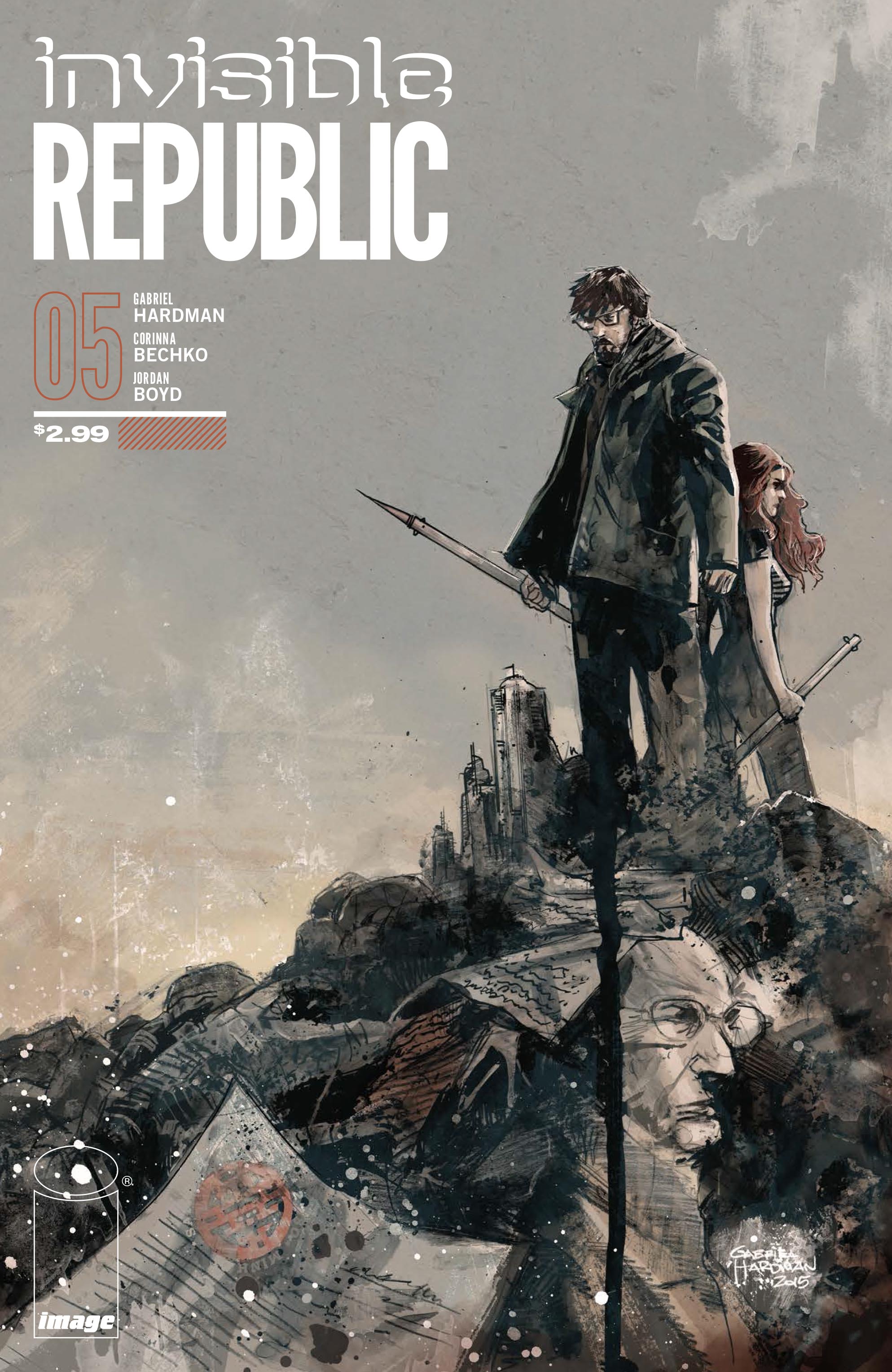
Clearly you’ve researched the subject of interplanetary colonization thoroughly. How does knowing the minutia of the subject help you tell a better story?
Corinna Bechko: I find that the more research you do on a subject, the more ways it can organically impact your story. Instead of looking for that one way that it fits in, it can work as background that adds texture throughout the narrative. That said, it can also be a rabbit hole of work avoidance. If the subject is interesting there is always more to discover about it and you have to eventually let go and let the characters and the plot take over.
Gabriel Hardman: Corinna is better at doing the hardcore research but I think I’m pretty good at keeping focused on the big picture. If something is interesting but doesn’t impact the story, it doesn’t belong in the book.
What are your go-to resources for research?
CSB: I read a lot of books for background on subjects that interest me, but that’s usually for fun, although it invariably plays into whatever I’m working on. If I’m looking for something specific I go to the internet, of course, although I always try to source stuff farther than just Wikipedia or whatever is at the top of a Google search. It’s good to develop a sense of what’s a trusted source in a given field, and then peruse the links that are suggested there. For instance, if I’m interested in some aspect of bird biology I might start at the Cornell Lab of Ornithology rather than just do a random search. A cautionary tale: if you Google “how old is the Earth?” you will get the correct answer at the top of the page in the little box, but the very first link goes to some fringe anti-evolution site.
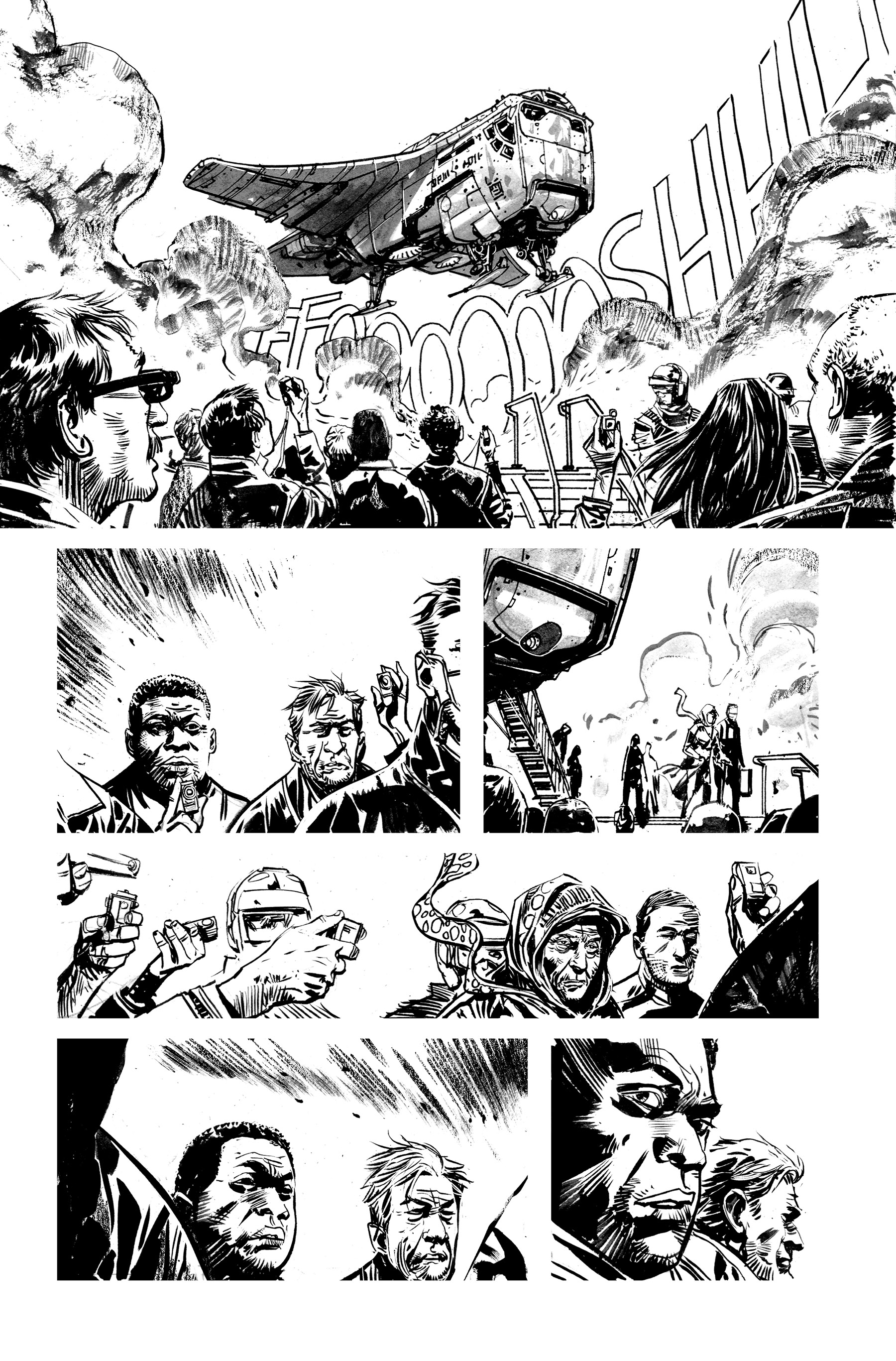
The essays are a great addition to the issues. Will they be collected in the trade paperbacks?
CSB: Thanks! A couple of them will be, but in general those are part of the “magazine” that we are making when we produce the issues.
GH: The back matter is meant to be an incentive to but the single issues.
If not there, will they be in the hardcovers?
GH: If we’re able to do an oversized hardcover collection, all of the essays and process pieces will be in there. We put a lot of work in to all that material every month so of course we’d still like it to be collected in a more permanent place.
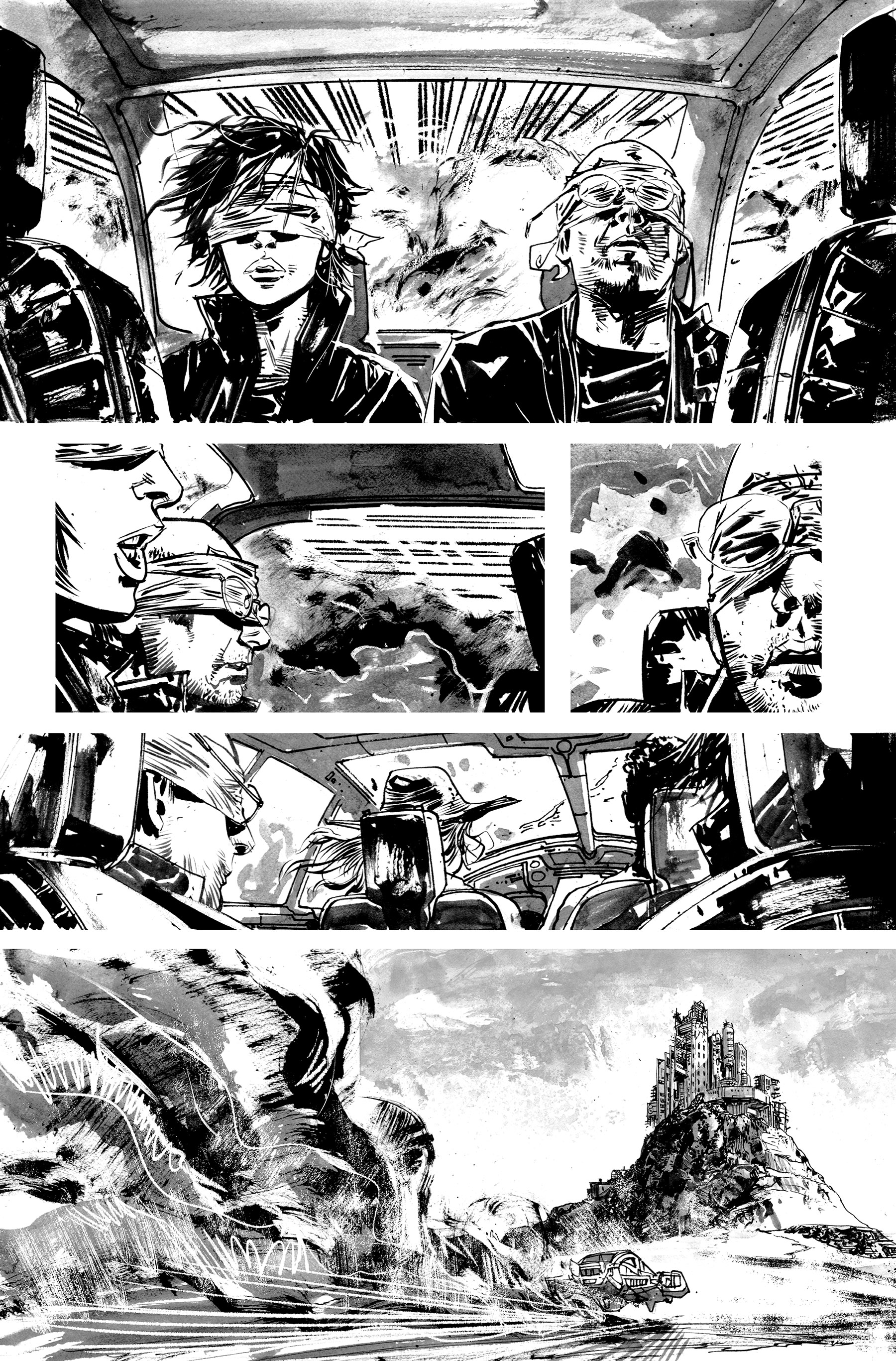
How did your run on Star Wars, also a science-fiction if less grounded property, prepare you for Invisible Republic?
CSB: It really refined how we told a long-form story through individual arcs. Both Star Wars: Legacy and our run on Planet of the Apes included a lot of politics and power machinations, things that are really intrinsic to Invisible Republic.
GH: I feel like the freelance work we did on licensed books was all about gearing up for Invisible Republic. Not to undercut those books, we’re enormously proud of them, but we were working out a lot of our process along the way. And contrary to what everyone seems to want to think, we had a huge amount of creative freedom and support from our editors on the Star Wars and Planet of the Apes books we did. I think licensed books can be a better place to tell stories than DC and Marvel books at the moment because you’re not beholden to all that stifling continuity. I know there are some very restricting licensed books out there too but we never had that experience.
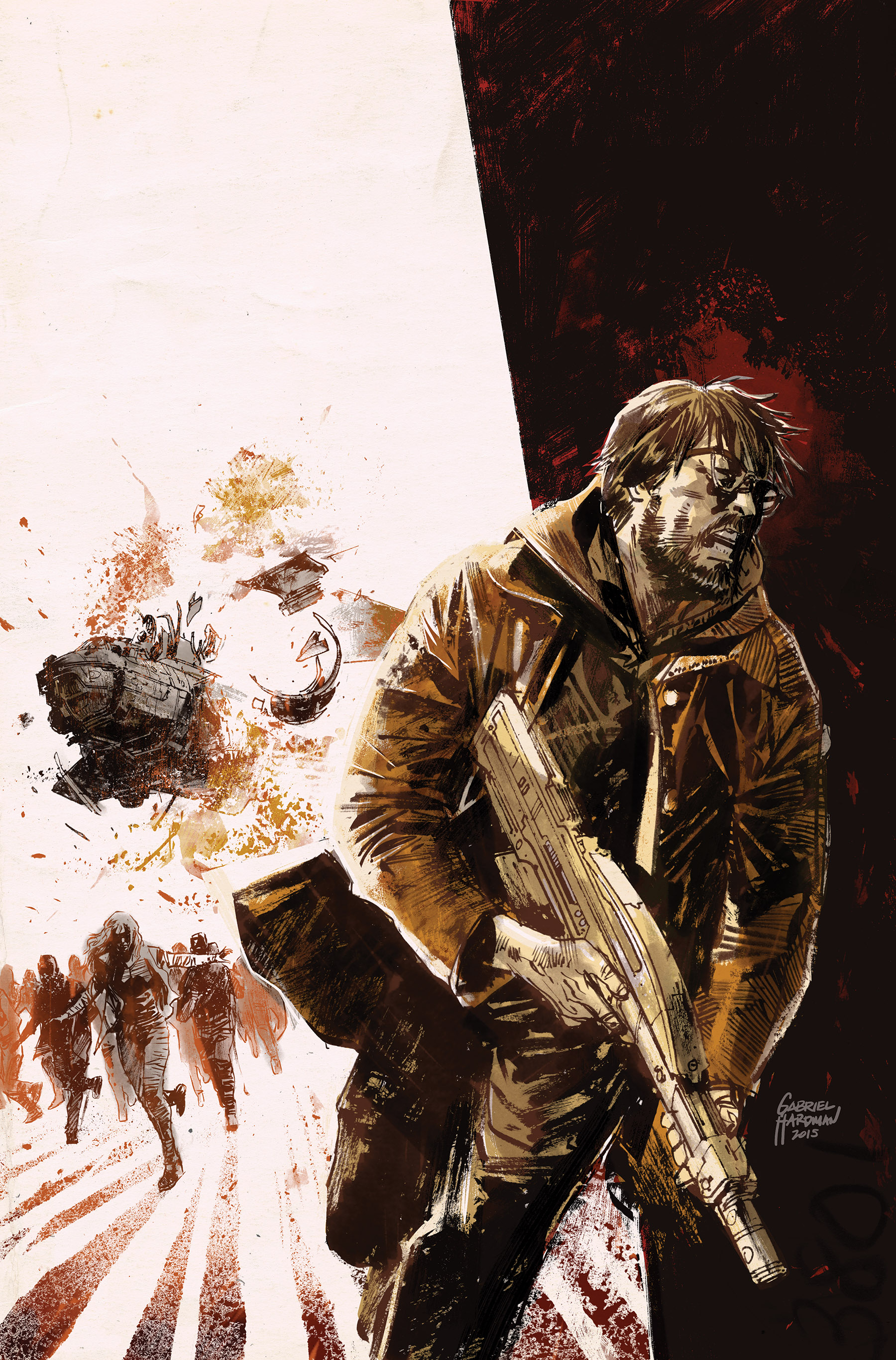
You said at a C2E2 panel that you don’t consider Invisible Republic a dystopian work. How much worse would the world have to be in your book for it to be a dystopia?
CSB: Haha! Well, it would have to be pretty bad, I suppose. The problem, in my mind, with labeling something as “dystopian” is that it invites comparisons with things like 1984 or The Road, stories that really contain very little hope for the future. I very much admire both those works, but I don’t necessarily want to spend a lot of time living in them, and to write something you have to live there to some extent. I wouldn’t want to write a story set in a utopia either, since it would almost have to be rather boring, but I think that by calling something a dystopia you can also negate the fact that very bad things happen in our own world, and I hope we don’t actually exist in a dystopia.
GH: And falling back on the extremes of Utopia/Dystopia in science fiction seems pretty reductive to me. The world of Invisible Republic is much more grey than that.
The story centers around Maia’s journal. Can we trust her to be a reliable narrator?
CSB: I don’t think you can really trust anyone in anything that Gabriel and I write. Well, Gabriel once wrote a trustworthy character, but he was a dog.
GH: That unreliability is one of the biggest themes we set out to explore. But that doesn’t mean the things in Maia’s journal are untrue. But you have to accept that everyone has something to gain by telling their own story.
How are the writing duties shared between the two of you?
CSB: We talk everything through, and both of us have the right to veto anything. If one of us likes it and the other one doesn’t, out it goes. We are very lucky in that we can talk about our work at pretty much any time since we share a home as well.
GH: We started writing full scripts for Invisible Republic like we do on freelance projects but it quickly became much more organic. Both the writing and art are telling the story so we try to integrate them as strongly as possible. Writing and art in comics are not separate things. It’s all storytelling.
What kinds of benefits come from having a co-writer?
CSB: It’s really useful to have an immediate sounding board. Writing can be a very solitary activity. Sometimes ideas get stuck in an eddy and won’t flow. But when there are two of you there’s a much better chance of getting the story back into the current.
GH: And it’s just great to talk story. Trust me, we do it a lot. Probably too much.
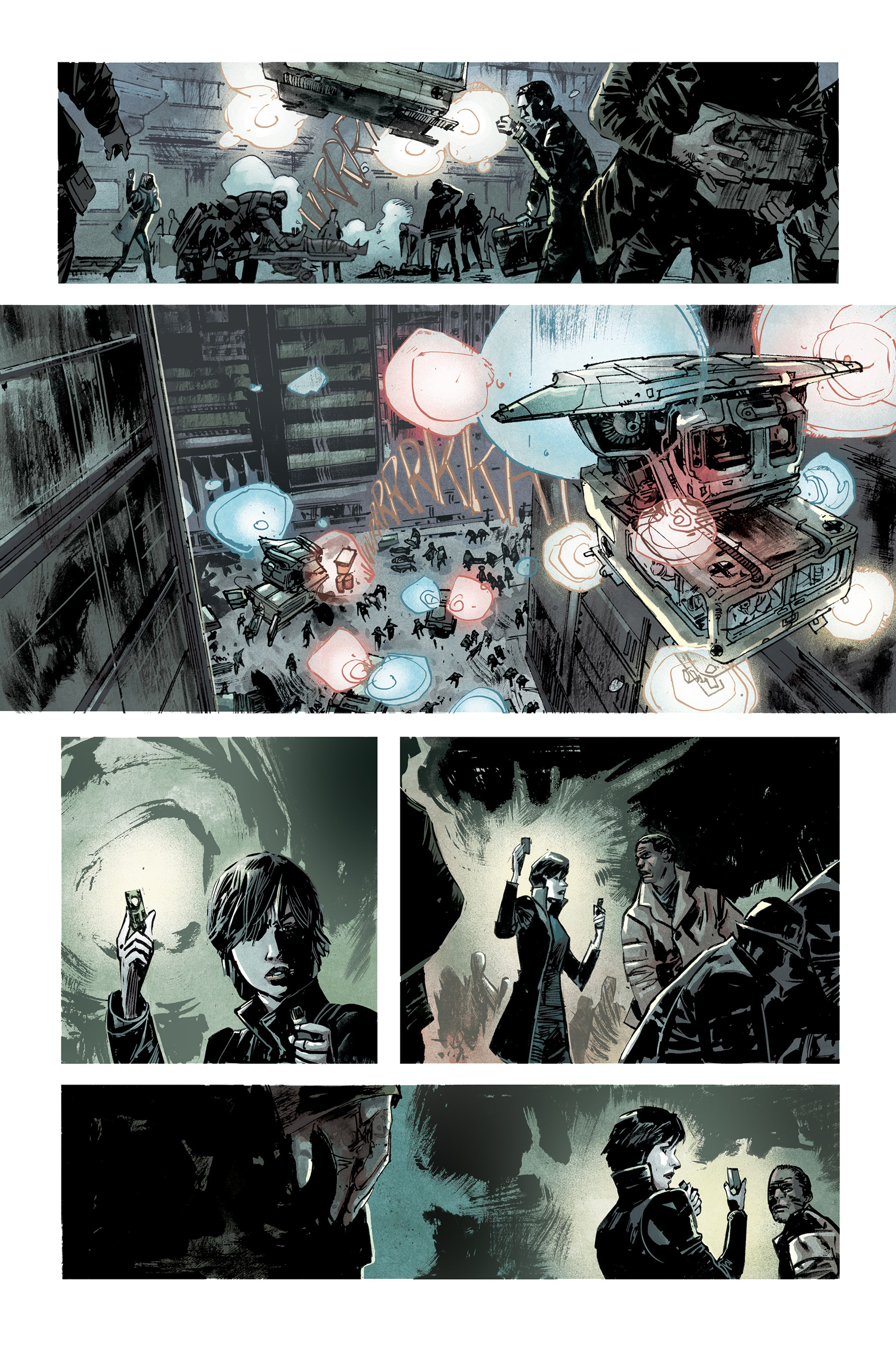
How has Jordan Boyd leveled up the work?
GH: Jordan is doing amazing work on this book. We were able to work together on several freelance issues leading up to Invisible Republic so there was no awkward phase on this book. We were already on the same page. He’s an enormously important part of the series.
CSB: I think Jordan is one of the very best colorists working today. That was true before we embarked on this project together. Every time I see his finished pages I’m wowed all over again.
The lack of stroke in the panels and word balloons in the present scene is a nice touch. What made you decide to use that style there instead of in the past?
GH: I just wanted another clear, simple way to distinguish the past from the present. Having no borders in the past seemed a little cliché so I reversed it.
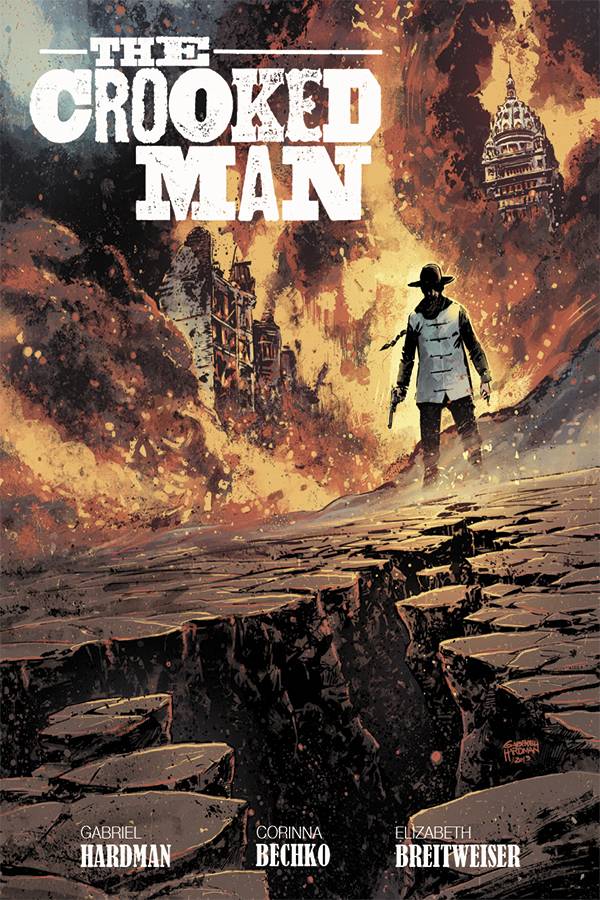
Between Invisible Republic and The Crooked Man, how does it feel to now be entirely doing your own stories your own way?
CSB: Really, nothing beats it. It’s incredibly hard work to put out a monthly book when there are only a handful of people working on it, but that’s equaled by the satisfaction in seeing something you’ve created from the ground up appear in print.
GH: It’s so much work…but it’s why we got into comics: to tell our own stories. There aren’t many places you can find original stories these days so we’re very lucky to be in this position.
Follow Corinna on Twitter and Gabriel on Twitter and Tumblr. Invisible Republic Volume 1 comes out TOMORROW, August 26th, from Image Comics. Don’t miss it.


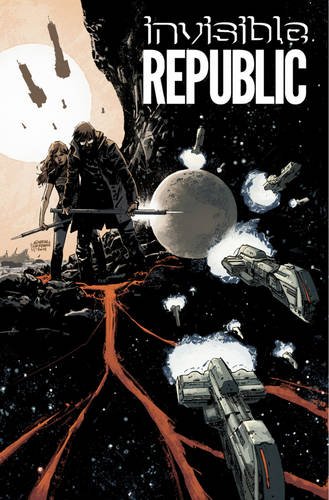
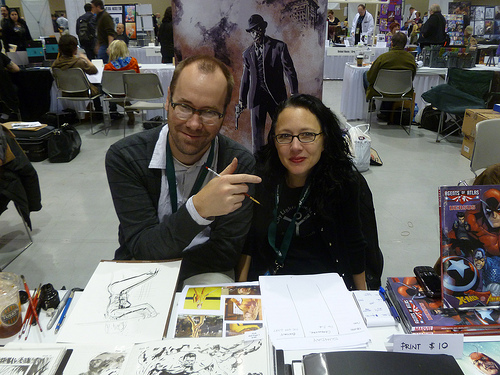
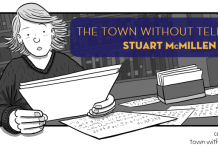
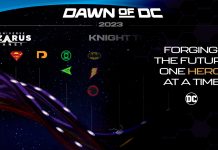



Invisible Republic is my favorite book for this year. A fully realized world, with two related complex storylines taking part in different time periods, it is never confusing or incomprehensible. Characters are strongly delineated, the art is breathtaking. If you are not reading this book, you should be.
Hadn’t noticed Crooked Man; will try to find it today.
Comments are closed.